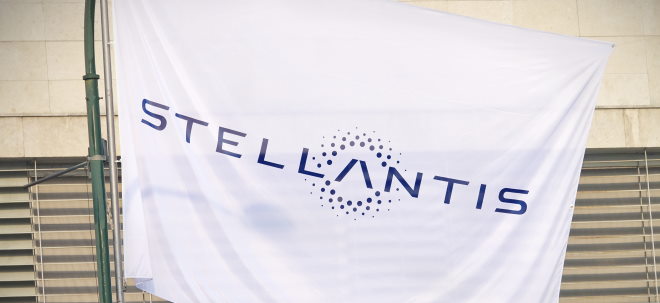Proton Therapy Continues To Be An Option for Certain Patients Amid Ongoing Access Barriers
2025 NAPT Annual Member Survey Highlights Increases in Patients and Conditions Treated; Continued Barriers to Access, Including Prior Authorization Delays, and Insurance Denials
JACKSONVILLE, Fla., Sept. 29, 2025 /PRNewswire/ -- The National Association for Proton Therapy (NAPT) today released encouraging findings from its Annual Member Survey, which showed more patients treated, additional centers opening, and an evolving and complex case mix of disease sites being treated with proton therapy.
Since 2012, NAPT has conducted an annual member survey designed to reveal key metrics regarding the patient and provider ecosystem evolving from one of the world's most innovative cancer treatments. As the only survey of its kind in the U.S., the NAPT Annual Member Survey yields insights including changes in the mix of conditions treated by proton therapy, treatment centers by type, industry growth, and the impact of prior authorizations, among other trends and challenges.
"This year's report paints an encouraging picture of a field that continues to move forward as more patients are being treated and new centers are opening their doors to serve those in need of advanced cancer treatments," said Jennifer Maggiore, LCSW, Executive Director of the National Association for Proton Therapy. "While challenges remain, especially around access and prior authorization, the progress outlined in this year's survey is a strong indicator that the industry is headed in the right direction."
Slight Increase in Proton Therapy Driven by Re-irradiation, GI Tract Cancers
Among the key findings in patient care:
- The number of patients receiving proton therapy increased slightly by 1,081 patients from 2023 to 2024, totaling 18,202 nationwide in 2024.
- From 2023 to 2024, several conditions were treated more frequently with proton therapy:
- 1.9% increase for breast cancer cases
- 7% increase for GI tract cancer cases
- 2.5% increase for head & neck cancer cases
- 8.7% increase in re-irradiation treatments
Despite Effectiveness, Proton Therapy Remains Inaccessible to Many Who Need It
Overall, less than 9% of those who would benefit from proton therapy are able to access it today.1, 2, 3, 4 Two new proton therapy centers came online in 2024 to increase access to patients in and near North Carolina and Illinois. More than 60% of the U.S. population lives more than 100 miles from a treatment center. 5
The survey also found that while access to the life-saving treatment remains constrained, with many patients facing administrative hurdles and significant travel distances, progress in increasing access is underway.
- Two-thirds (66%) of proton centers reported delays in patient care due to prior authorization.
- Nearly three-quarters (73%) of centers had a significant number of cases – a quarter or more - requiring prior authorization.
- A third (33%) of prior authorization requests for proton therapy in 2024 were initially denied, up from 30% in 2023.
- About a quarter – 24% total – were subsequently approved upon appeal, up from 20% total in 2023.
- In 2024, 71% of patients reported experiencing delays in care delivery due to prior authorization (down from 76% in 2023).
Prior authorization continues to be a challenge for the nation's proton centers, resulting in delays to critical patient care. Even as some of the insurance denials are resolved favorably, patient care delays often impact outcomes. NAPT continues to advocate for broader coverage policies that recognize current clinical research and value and more timely appeals processes, without unnecessary barriers to established clinical care that limit or delay patient access. Proton therapy patients are encouraged to utilize the NAPT Resource Center, which provides valuable resources on the treatment, including the Insurance and Appeals Toolkit which guides patients through the approval process.
"Delays in cancer treatment are not acceptable," Maggiore continued. "When physicians determine that proton therapy is the most appropriate course of care, that recommendation should not be undermined by arbitrary insurance denials or administrative delays. We need policymakers and stakeholders to join the proton therapy community in advocating to eliminate unnecessary delays and ensure patients can access timely, life-saving treatment."
The 2025 NAPT Annual Member Survey underscores both the promise and the challenges facing proton therapy. While more patients are being treated and more conditions are addressed each year, access remains uneven, with prior authorization and geographic barriers continuing to delay care. The findings reinforce the importance of continued advocacy to expand access to those who need proton therapy and streamline the patient experience.
Download the 2025 Member Survey Executive Summary and visit the NAPT Resource Center to learn more about NAPT membership, which grants access to full results.
About The National Association for Proton Therapy
The National Association for Proton Therapy (NAPT) is an independent nonprofit organization founded in 1990 to educate and increase awareness about the clinical benefits of proton therapy. Its members include 51 of the nation's leading cancer centers, many of which are NCI-designated comprehensive cancer centers and NCCN members. The mission of NAPT is to work collaboratively to raise public awareness of the clinical benefits of proton therapy, ensure patient choice and access to affordable proton therapy, and encourage cooperative research and innovation to advance the appropriate and cost-effective utilization of proton therapy.
Media Contact:
Audrey Chang
VegaRun
a.chang@vegarun.com
202-489-8634
![]() View original content to download multimedia:https://www.prnewswire.com/news-releases/proton-therapy-continues-to-be-an-option-for-certain-patients-amid-ongoing-access-barriers-302569005.html
View original content to download multimedia:https://www.prnewswire.com/news-releases/proton-therapy-continues-to-be-an-option-for-certain-patients-amid-ongoing-access-barriers-302569005.html
SOURCE The National Association for Proton Therapy


